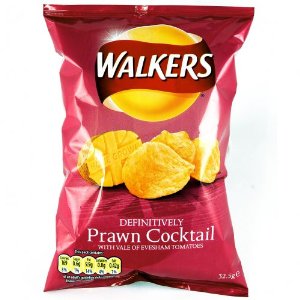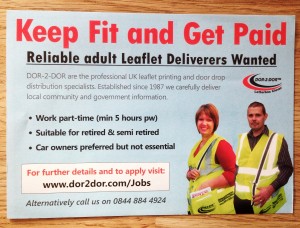Sell on benefits, but which ones?
At the start of a copywriting project, it’s always worth reviewing all the the benefits of the product or service you’re going to write about. First, you make a list of all the good things that happen when customers buy, from the ‘hard’ practical benefits through to the purely emotional ‘soft’ ones. Then you work out which (if any) are unique. Finally, determine your strategy by deciding which one(s) are most appealing and which you’re going to write about, and in what order.
Sounds good on paper. But it’s easy to end up missing out this step, particularly as a freelancer. Clients may have a strong idea of ‘what they want to say’, which usually means emphasising particular benefits over others. The problem is that the benefits they feel are important may not be the ones that customers actually value. In this post, I’ll look at a few of the problems that can arise.
Newer benefits aren’t necessarily better
In my experience, long-established firms can sometimes overvalue novelty by privileging new features or benefits over old.
That may be because they are consciously targeting innovation, and they’re particularly pleased with their latest introduction or improvement. Or maybe it’s because they’ve simply got bored of their own offer, and can no longer appreciate how good it looks to someone encountering it for the first time. Familiarity breeds contempt.
In this situation, the copywriter’s job is to see the product with fresh eyes, and express its core appeal in a new, compelling way. Not just to the customer, but to the client too, so they can be confident in a strategy that might, at first sight, feel a bit conservative.
The sausage might work better than the sizzle
Another problem is what we might call ‘value inflation’: chasing benefits too far towards the customer’s own emotions, when the sweet spot is actually much closer to the product itself.
Normally, it’s good to express a benefit in terms of what the customer gets, rather than what the product does – the sizzle, not the sausage. But as I explained in Sell on features, not benefits, there are times when the opposite is true.
It all depends on context: the nature of the product and the expertise or interest level of the reader. To the knowledgable, motivated customer, features are benefits, insofar as they are understood as positives. If so, you won’t gain anything by slathering them in ‘persuasive’ language, and may even erode credibility by presuming to know the reader’s mind.
For example, if you’re selling sausages to ‘ordinary’ consumers, then sizzle is probably the way to go. But if you’re selling to a professional chef, it might be better just to describe the product rather than presuming to tell them how succulent and delicious it is.
We’re actually seeing a move towards more feature-focused writing in food descriptions, such as the obsessive need to state locations of origin:
In case you can’t read the image, it says ‘Definitively Prawn Cocktail, with Vale of Evesham tomatoes’.
Although this masquerades as a ‘knowledgeable reader’ mechanic, it’s actually something subtler. I’m sure most crisp buyers have never heard of the Vale of Evesham, making this an empty feature on the face of it. But specificity and exclusivity connote discernment and quality, so ‘from place X’ is (we hope) interpreted as ‘of high quality’, even if the reader doesn’t know anything about X. The Evesham business is really just a roundabout way of saying ‘tastes nice’, with a detour via contemporary concerns about reputable origin and local sourcing.
It may be U, but is it actually an SP?
Because the idea of a USP is so deeply ingrained in marketing culture, the temptation to put them at the heart of the message is very powerful. That’s fine in principle, and often in practice too – ‘this is something we offer that no-one else can’.
However, ‘unique’ doesn’t necessarily mean ‘strong’. Using the wrong USP – or reaching for one that isn’t really there – can lead you into irrelevance, making you look like a weird outlier when all people need is a solid performer.
Arguably, my local pizza joint did exactly this with their ‘South Asian kebab shop’ pitch (although, to be fair, this message may have an appeal for some customers that’s invisible to me).
Just drop the ‘probably’, Pizza Time. Nobody’s going to check pic.twitter.com/AigSNATqgV
— Tom Albrighton (@tomcopy) March 4, 2014
If there’s a local demand for a standard product/service, and you are well placed to serve it, there isn’t such a pressing need to differentiate. All you need to do is signal your appropriateness by presenting generic benefits in a reassuring way. That might not excite your copywriter very much, but there’s no point reinventing the wheel.
The ‘wrong’ benefit might be right after all
To an economist, people buy a product because it offers them more benefit than its rivals. But copywriters know that finding the right benefit to sell on isn’t just a question of rationally weighing one against the other to objectively determine which delivers the most advantage. It’s about imagination, insight and empathy – deciding, perhaps through instinct and gut feeling more than anything else, which benefits will touch people most deeply.
As Viktor Shklovsky said, ‘art exists that one may recover the sensation of life; it exists to make one feel things, to make the stone stony’. And the art of the copywriter is no different. Our job isn’t to describe the stone exhaustively, or even to differentiate it from other stones, necessarily. It’s to make the stoniness of the stone so overwhelmingly present for the reader that it seems like the most important thing in the world, even if only for an instant. And that might mean using a benefit that seems ‘wrong’ at first sight.
Sometimes, there may be a received way of talking about benefits that clients don’t want to deviate from (or haven’t thought to). But focusing on an unexpected benefit can be very powerful. For example, have a look at another flyer that came through my door the other day.
I’ve never seen a door-to-door job promoted this way before, but there’s no doubt that fitness can be a real benefit of this type of work. I’ve got a friend who worked as a postman, and walking all those miles every morning got him into the shape of his life.
Lots of advertisers would have mentioned this as an afterthought. The genius here is seeing that something that the advertiser might regard as tangential, or even a downside, can be recast as a positive for the reader. Leading with fitness as a benefit transforms a desultory message (‘earn extra money delivering leaflets’) into something that sounds almost too good to be true (‘get paid to get fit’).
Of course, it won’t work on everyone, but that’s the point. Casting the net wide just means gathering up people who are looking for any old work (and they’ll probably seek you out sooner or later anyway). But this targeted, powerful message could actually convert people who’ve never considered delivering leaflets before – and give them a motivation to work hard in the process.
Once you start thinking about what people really want, the sky’s the limit. For example, another benefit of delivering leaflets is that it’s easy: you don’t really have to think about what you’re doing. In a world where everyone’s expected to be ‘challenged’ or ‘engaged’ by what they do, it would be a brave recruiter who broke the mould by saying this. But why not? Earn money and get fit doing something easy. Where do I sign up?
Comments (9)
Comments are closed.


Focusing on features over benefits? Thought-provoking stuff, Tom.
Good post that highlights a number of issues:
1. Marketers rarely know if their USPs are actually unique
In my experience, although we are all keen to talk up our product or service, it is rare to find a marketing team that regularly go out into their own market place to understand who the key players are, how they operate and how their USPs are derived.
The best companies’ USPs tend to come out of a strategic advantage that emerges from their business model. But many companies will lean on generic words like ‘expertise’, ‘passion’ and ‘doing things differently’ – when there is no understanding in the non-savvy customer’s mind for what these mean in practice. This is particularly rife in travel.
2. Marketers can be poor at writing creative briefs
It’s easy to write a brief that says “please say *this* but in fancier language”. That’s defining the solution rather than the problem.
Most marketing activity is done on such a conveyor belt of churn that it’s rare to find a marketing manager willing to take a step back and really think about the motivations of the people they are ultimately talking to. Getting marketing people to interact with actual customers can be hard too!
That leaves the copy person searching for their own inspiration and using their own hunches, which massively increases the risk of the message not hitting the mark.
3. It’s hard to write engaging copy unless you have experienced the thing you’re selling for yourself
I’ve worked with some really good freelance copywriters but have always felt they are at a disadvantage to people who actually work within the company. Writing with an intuitive and natural sense of what it means to interact with that company takes experience and empathy – either using their product or service or, ideally, observing customers using it.
For that reason I usually advocate for writing to be a core skill for the marketing team, not something that can be easily contracted out.
Nice. I quite like your Pizza example — it’s such a mumbling and obscure boast as to be charming and funny. The Get Fit angle is good too. It’s a minimum wage type of job for people on the margins but recasting it as a positive, where the leafletter is empowered and making a choice for themselves is great.
Thanks for the comment. I liked it until the bit about not using freelance copywriters.
Thanks for the comment. It’s a bit unfair to pick on Pizza Time, but I think the example does show how magnetic USPs can be. I think because USPs are so binary and objective (you’re either the only one or you’re not), they can easily be perceived as ‘the answer’ to the problem of choosing benefits. It’s easier to simply state an uncontrovertible USP than to wade into the thicket of multiple competing benefits to tease out which one(s) are best.
Being ‘probably the best lager in the world’ worked quite well for Carlsberg because of the uniqueness of the uncontestable claim 🙂
That was designed to be provocative 🙂
I guess the logical demand is to ask the client to experience the product or observe their customers doing so, in order to properly empathise with what is going on. This is whether you’re in-house or freelance.
I think there is no reason not to use freelance copywriters, as long as you choose them well. I’m afraid using the agencies is not without a fault as well as they tend to reuse ideas and rely on the focus groups a little too much for original message 😉
His older post https://www.abccopywriting.com/2013/10/03/sell-on-features-not-benefits was also great.